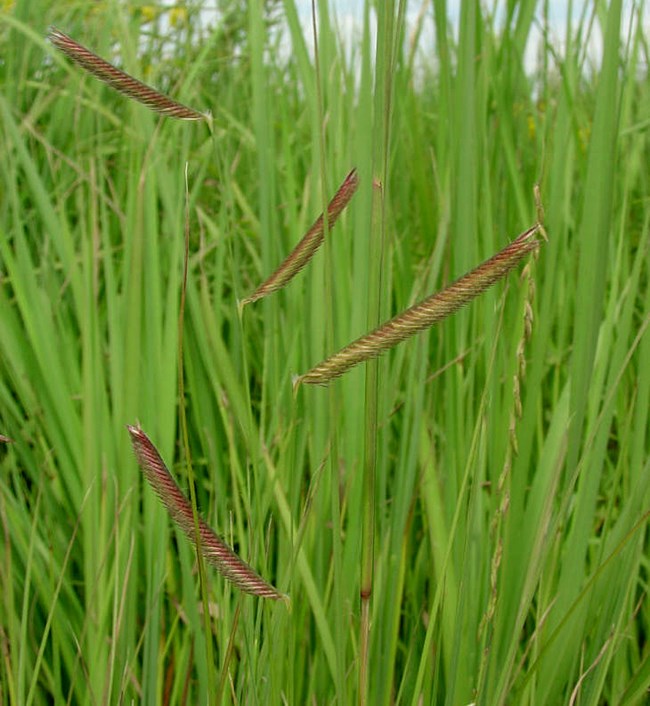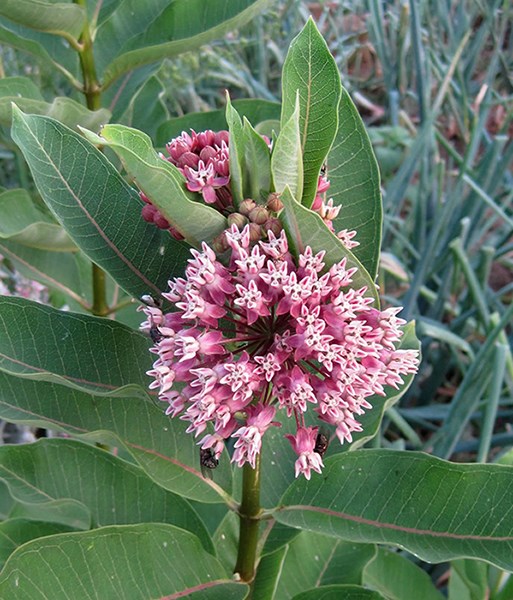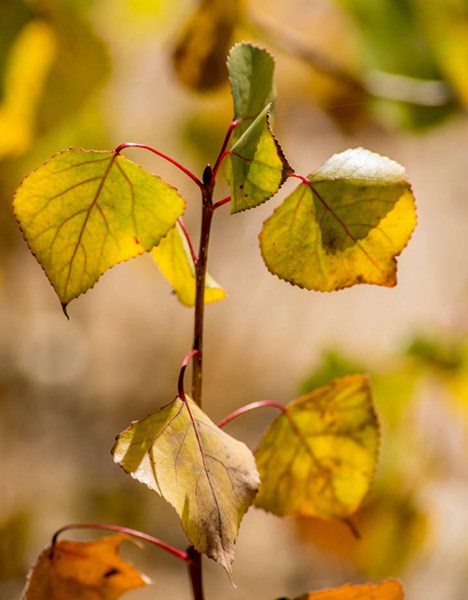
USFWS/Sara Hollerich During the 1840s, the ground around the fort was heavily grazed, as traders and Native Americans held their livestock in the vicinity. It continued to be grazed until the homesteaders arrived in the Arkansas Valley at the turn of the century. At this time, irrigated agriculture became the strength of the local economy. As local prairies were transformed into crop lands, most of the native plant species were lost in the area which is now the park. Today, there are remnants of riparian grassland species present. Work continues to restore native prairie plant communities. The native prairie is classified in the Kuchler Vegetation Type as grama/buffalo grass. To date, 147 plant species have been identified in the park. Plant inventory work has been done here since 1973 and approximately 90% of the plant species have been documented. A vegetation map is available. Dominant grass species include blue grama, buffalo grass, sand dropseed, western wheatgrass, sideoats grama, and saltgrass. Dominant shrub species include sandbar willow and sand sage. Dominant tree species along the river include Plains cottonwoods and peach-leafed willows. 
U.S. Forest Service During average and wetter-than-average springs, a variety of wildflowers can be seen throughout the park. The more common wildflowers include copper mallow, evening primrose, lead plant, and common milkweed. Rarer flowers at the park include three-wing sand verbena, sand verbena, snow-on-the-mountain, and wild four o'clocks. Mid- to late spring provides a bountiful bloom of cactus and other desert succulents. Red and yellow pricklypear cactus, pincushion cactus, barrel cactus, and cholla cactus are in peak bloom the last half of May. Other succulents, such as yucca, also flower during this time. The principal cactus growing in the park is Plains pricklypear (Opuntia polyacantha). "In the evening I was carried down to the river, and took a bath in the refreshing waters of the Arkansas. This bottom land was now chequered with brilliant masses of color, produced by the groups of plants which were growing in great luxuriance. The golden rod, the purp. Eupatorium, the sunflower, silver marged euphorbia, and the pink cleome, mingled together, clad in their brightest hues; and the sandy plain that skirted the bottom was varied with the golden gourd, cucumes perenius, and a beautiful species of solanae." 
USFWS/Brett Billings Human disturbances in and around the park have led to the spread of exotic plant species. However, with the removal of tamarisk, native trees and shrubs have once again begun to dominate the park's riparian area. Along the river banks there are thick stands of sandbar willow where tamarisk once stood. A cottonwood woodland creates a dappled shade for the grasses and wildflowers. Peach leaf willows and shrubs, such as the groundsel tree, snowberry, skunkberry, and wild rose, are also present. Scientists from the Southern Plains Network monitor grasslands, soils, riparian vegetation, and exotic plants at Bent's Old Fort National Historic Site. |
Last updated: April 24, 2025
